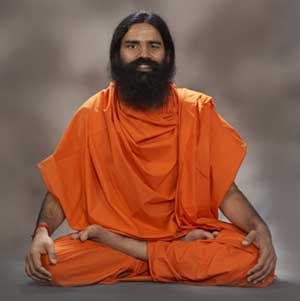
Dhyan - Meditations
Dhyan means meditation. Its is one of the principle eight steps in Ashtang Yoga, in which focuses the mind and meditates on God. Our ancient rishis practiced dhyan for many months and years at a time in the serene lap of nature. Sitting in Siddhasan or Padmasan the aspirant first closes his or her eyes to shut out all visual distractions.
Dhyan-mulam guromurtihi - the root of dhyan lies in meditating on the guru. The guru is believed to be form of God. Through the guru's grace an aspirant's effort is blessed with God-realization. Daily practice of dhyan calms the stressful mind, increase concentration, and liberates the soul from the bondage of maya.
Sitting in Siddhasan or Padmasan the aspirant should first close his or her eyes to overcome all visual distractions. Then he should contemplate that his true form is Atma (soul) and not the body. He should also ponder upon the attributes of Atam (soul); that it is eternal, pure, blissful, and free from all worldly bondages. As one advances in Dhyan, by profoundly focusing either on the guru or murit of God, one sees God within one's Atma.
Dhyan-mulam gurormurtihi - the root of dhyan lies in meditating on the living guru. The guru is believed to be the form of God. Thinking of God's divine glory is also a form of God. Thinking of God's divine glory is also a form of God dhyan. Through the guru's grace an aspirant's effort is blessed with God-realization.
In our stress-filled lives Dhyan rejuvenates and individual, and ultimately lead to self-realization and God-realization. Daily practice of Dhayan calms the wavering mind, increases concentration and enlightens the soul. The positive vibrations of Dhyan transform the individual, making him or her equipoised, self-fulfilled, happy and fearless.